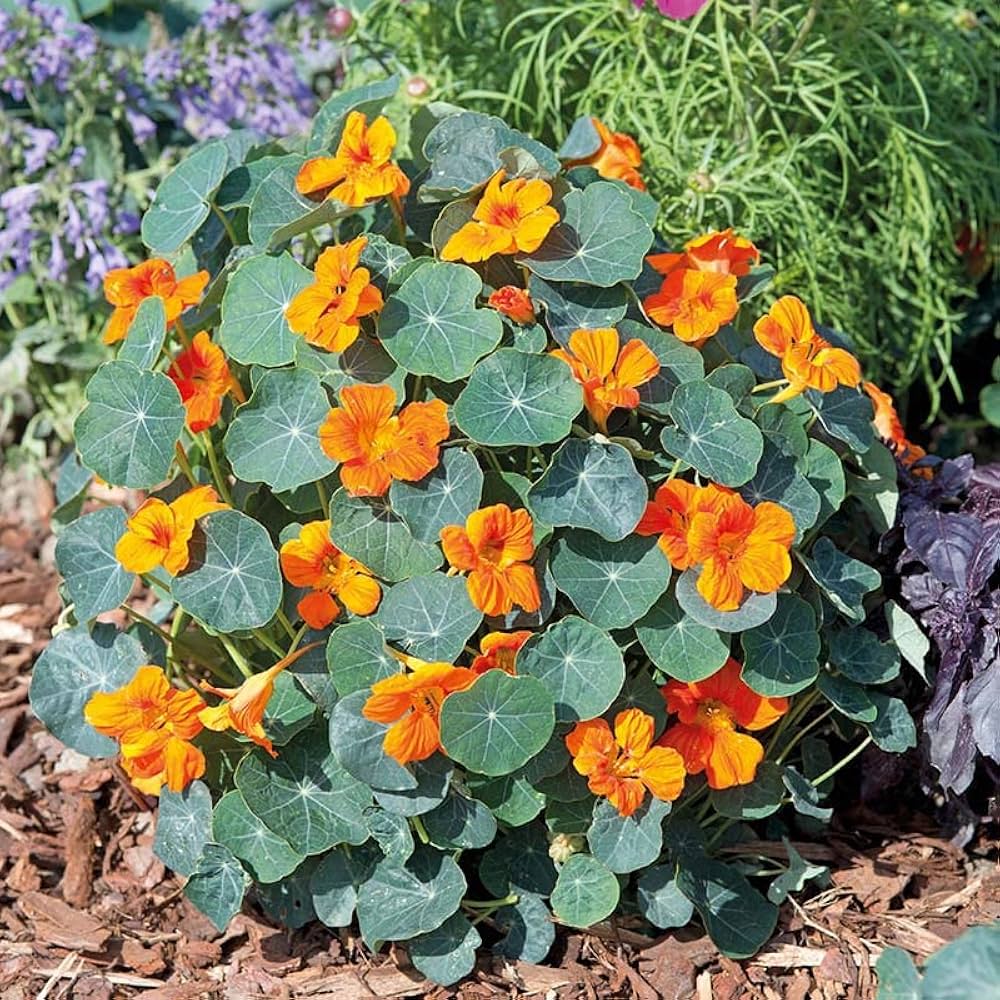Nasturtium Tropaeolum majus Flower Seeds for Planting Orange Variety in Home Garden
Couldn't load pickup availability
Description
Nasturtium Flower Seeds (Orange)
Characteristics and Uses of Nasturtium Flower Plants
Nasturtium flowers are vibrant, edible blooms known for their striking orange color and peppery flavor. These non-GMO seeds produce trailing or bushy plants that are perfect for adding a splash of color to gardens, containers, and hanging baskets. The flowers and leaves are not only visually appealing but also edible, making them a delightful addition to salads and garnishes. Nasturtiums are also known for attracting beneficial insects, making them a great companion plant in vegetable gardens.
Growing Conditions for Nasturtium Flower Plants
- Light Requirements: Prefers full sun to partial shade, requiring at least 4-6 hours of direct sunlight each day.
- Soil Type: Thrives in well-draining soil that is moderately fertile; they can tolerate poorer soils.
- Temperature: Best suited for warm temperatures, ideally between 60°F and 75°F for optimal growth.
Planting Tips for Nasturtium Flowers
- Timing: Sow seeds directly outdoors after the last frost date or start indoors 4-6 weeks before the last frost.
- Depth: Plant seeds about 1/2 inch deep in the soil, ensuring they are well-covered.
- Spacing: Space plants 10-12 inches apart to allow for proper air circulation and growth.
Watering Instructions and Tips
- Watering Frequency: Water regularly, providing about 1 inch of water per week, especially during dry spells.
- Mulching: Apply a layer of mulch around the base to help retain moisture and suppress weeds.
- Signs of Underwatering: Look for wilting leaves or dry soil as indicators that your plants need more water.
Growing Zones
Nasturtium plants are well-suited for USDA zones 2- and can adapt to various global climates, making them a versatile choice for gardeners looking to cultivate these beautiful flowers.
Key Benefits & Uses
- Edible Flowers: Both the flowers and leaves are edible, adding a peppery flavor to salads and dishes.
- Attracts Pollinators: Known for attracting bees and other beneficial insects, enhancing garden biodiversity.
- Easy to Grow: Nasturtiums are low-maintenance and can thrive in a variety of soil conditions.
Best Uses in the Garden & Landscape
- Vegetable Gardens: A great companion plant that helps deter pests and attract pollinators.
- Container Gardening: Ideal for pots and hanging baskets, adding color and interest to small spaces.
- Flower Beds: Perfect for borders and mixed flower beds, providing vibrant color throughout the growing season.
Conclusion
Nasturtium flower seeds from bijaseeds are an excellent choice for gardeners looking to cultivate vibrant and edible blooms. With their distinctive characteristics and numerous benefits, these non-GMO seeds are perfect for enhancing any garden space. bijaseeds is a big, trusted name in the seed world, offering a wide range of high-quality, non-GMO varieties to gardeners everywhere.
FAQ
How do I grow Nasturtium flowers from seeds?
To grow Nasturtium flowers from seeds, start by planting them in well-draining soil in a sunny location. Water regularly, allowing the soil to dry slightly between waterings for optimal growth.
When is the best time to plant Nasturtium flower seeds?
The best time to plant Nasturtium flower seeds is in early spring after the last frost. If starting indoors, aim for 4-6 weeks before the last frost date to ensure healthy seedlings.
Are Nasturtium plants difficult to grow?
Nasturtium plants are relatively easy to grow, making them suitable for gardeners of all skill levels. With proper care, including adequate sunlight, watering, and spacing, they can thrive and produce beautiful blooms.





